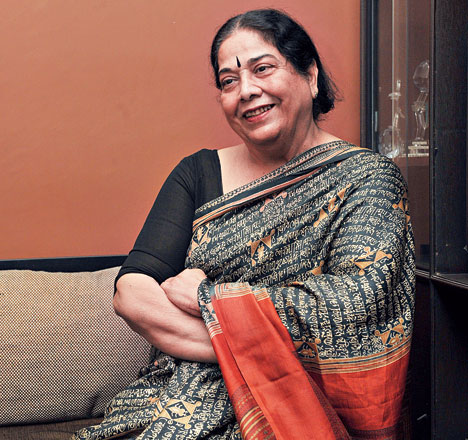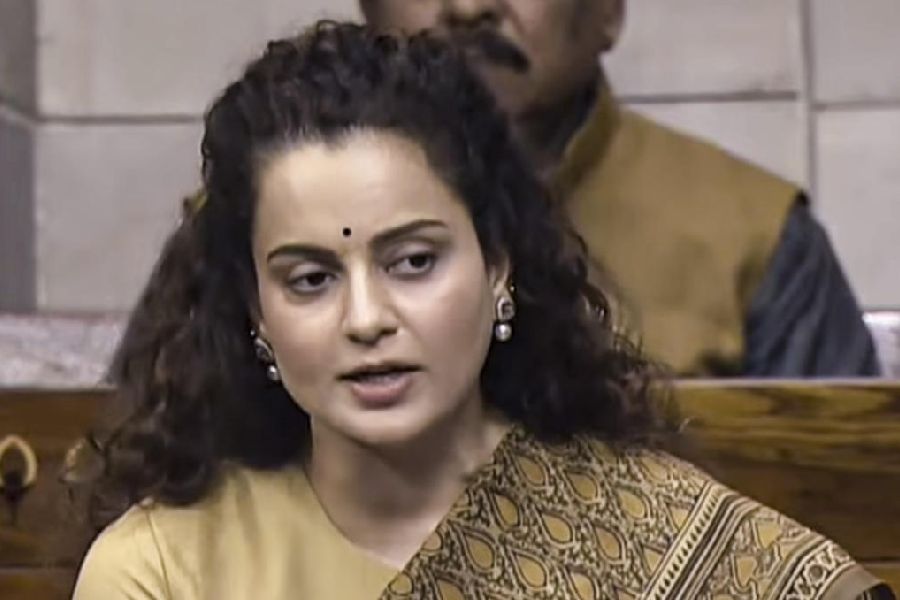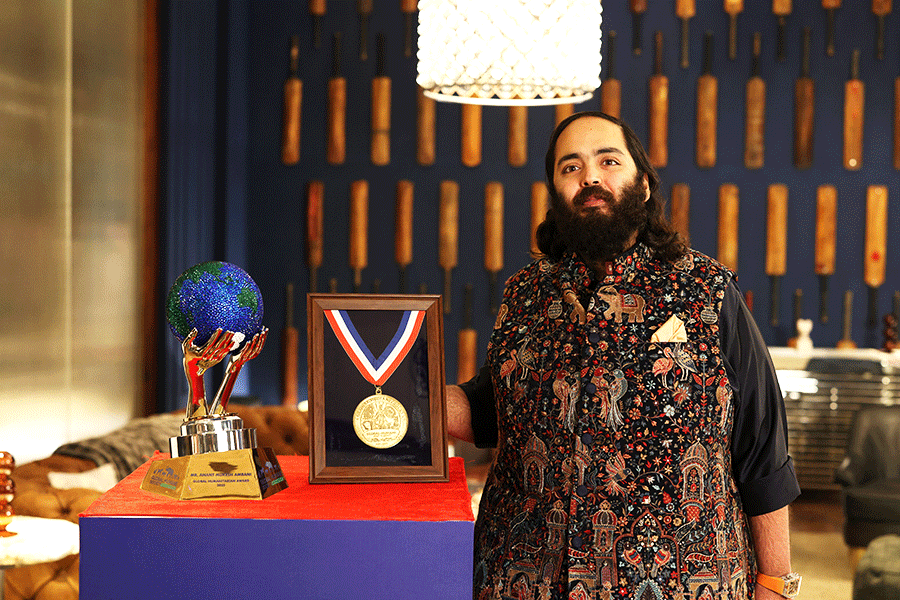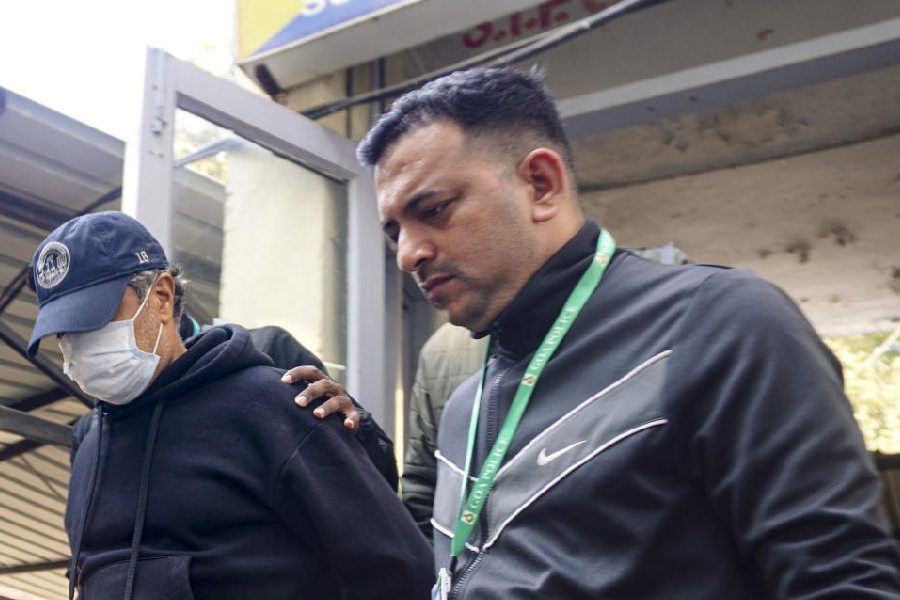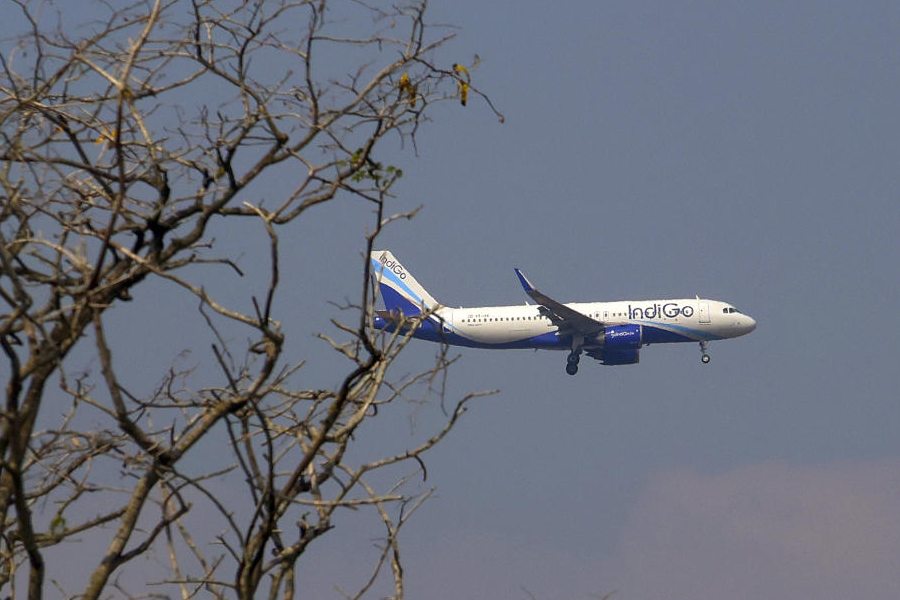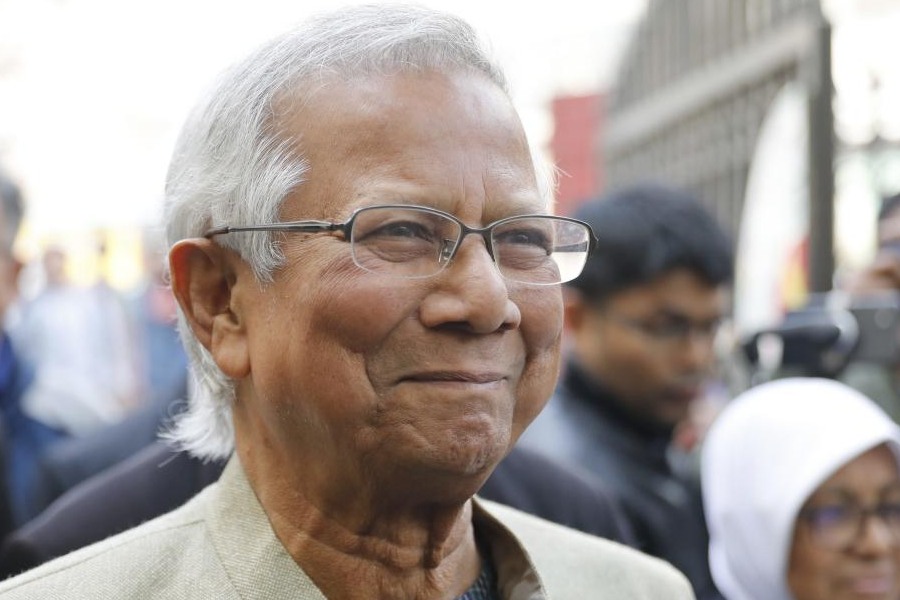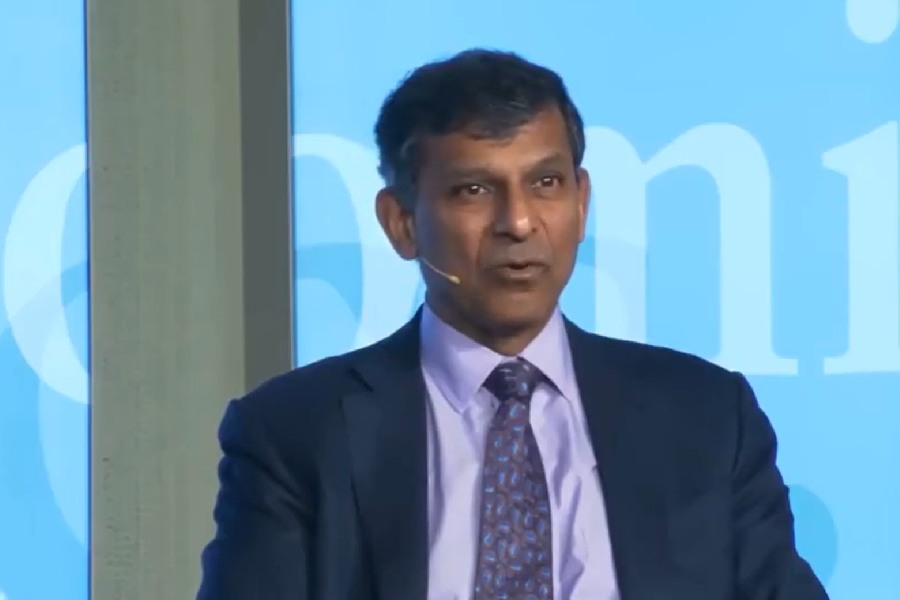
Picture: Pabitra Das;
(Below) At The Telegraph She Awards 2018.

Come to my studio theatre in the evening. We have a show there. Have you checked it out yet? It’s a beautiful space. I have named it Binodini Keya Mancha,” says Usha Ganguli, as we meet her in the first floor drawing room of her Lake Gardens home. She gets up in the middle and insists that we try the aloo bhujia with tea. Such is the warmth of the actor-director-writer, who has been doing theatre for more than four decades now with her group Rangakarmee.
The recipient of The Telegraph She award in performing arts, Usha Ganguli has gifted Calcutta many a memorable play including Lok Katha, Mahabhoj, Rudali and Hum Mukhtara. And the 72-year-old has more to offer. Excerpts from the t2 chat…
Memories of a village
I was born in Jodhpur and after a few years came to this small village near Kanpur where we stayed for a year. The memory of that village has influenced me a lot. Till now, I fall back on those memories to create imageries of a village, its colours, trees, marriage ceremonies and the people. We were Brahmins and Dalits were not allowed to come inside our house. I must have been six then, and that was the time I learnt a lot about what social conflict is. It was my first brush with the caste system, my first understanding of Hindu-Muslim equations. The colours of the village, of the women, their music, costumes… all made a permanent imprint on my mind. Those memories later helped me create my own costumes in plays like Rudali and Lok Katha.
I used to ask my mother why she was not allowing the Dalits come to our house. There was a wall in our village. I used to ask what was there beyond that wall and whether I could go and check it out. I was never allowed to do so, but I kept asking questions a lot. I have never stopped questioning since.
Enter, Calcutta
After shifting to Calcutta, we stayed in Burrabazar. I was admitted to Adarsh Hindi High School. Later, we shifted to Swiss Park, Tollygunge, which was totally a Bengali para. That neighbourhood created the Calcuttan in me. I picked up the Bengali language. Then there was Durga Puja, Bengali friends, para theatre... it was a totally different Calcutta then. It wasn’t so crowded. I was very impressed by the Bengali culture... the red-bordered sari, the songs coming from my neighbours’, Rabindrasangeet.
Dance and stage
My mother started taking me to dance classes at Sangeet Shyamla, a school in Gyan Manch. I met Chetna Jalan there. We are childhood friends. Chetna went into Kathak and I moved into Bharatanatyam. Through dance, I got a taste of performing on stage. I had performed on many occasions including the prestigious Sadarang Conference. My childhood was full of cultural events. At the age of 15, I did Kach O Debjani on Beadon Street. And that was the time when I got somehow connected with Rabindranath.
A tryst with Tagore
I was introduced to Rabindranath through music. There is a lot of music in Kach O Debjani. Even now, when I talk of politics — everybody thinks I am either Left or progressive Left — but I think Rabindranath’s approach to politics, which is based on humanity, is the best politics. Political sensibilities based on humanity is what I nurture till now.
Next, I did Pratham Puja when I was in college (Shri Shikshayatan College), first year.
.jpg)
Thirst for independence
After completing college, I fought with my family, especially with my mother. I remember I didn’t eat for four days to compel them to admit me to Calcutta University. I decided that economically, I should become a stable person. That is one way to get power. Power and freedom. One should be independent. Once my father complained that I was spending too much on books. The next day I told him that he need not give me money for my books. I had started tutoring a little Gujarati girl in Rashbehari. In the university, when I was in final year, our HOD said that I won’t get a first class. I was shocked… how could he say that before the examination? I was very ziddi. I said, no, I must get first class. I left dance. For one year, I used to go to National Library with my father and read through the day. I came first class second.
Taste of theatre
I was a dancer. I was an orator in school. But I never thought that I would become a theatre person. After my examination, I started teaching at Ballygunge Sikhsha Sadan. There, a lady was looking for someone to do the role of Vasantasena in Mrichchakatikam. That was the same year I got married — February, 1968. Those were the days when we had to take permission from the men in the house. And my husband Kamalendu Ganguly gave me the permission to join theatre. That was 1970. I did my first play after marriage — Mitti Ki Gari based on Sudraka’s Mrichchakatikam, produced by Sangeet Kala Mandir.
A real city
After my marriage, we started living on Vivekananda Road. My son was born in 1974. I got the taste of north Calcutta nostalgia. I experienced the real Calcutta. I used to walk for miles... Calcutta is one city where I can navigate through any neighbourhood. I remember walking from Vivekananda Road to Tollygunge! I have seen the city very closely and I madly love this city. I was so much in love with this city and Bengal’s culture that I think I agreed to marry a Bengali just because of my love for Bengal’s red-bordered sari.
I was totally a vegetarian. On the day of my boubhaat, I ate fish for the first time. Now I only eat fish. I don’t like chicken or mutton. And my house is a Bangal bari. So I have also learnt to cook fish and my friends are mad about my cooking. I have kind of integrated the UP style of cooking veg dishes with the Bangal ranna.

Birth of Rangakarmee
There were two to three Hindi theatre groups at that time. One was Adakar, then there was Anamika Kala Sangam and a few smaller groups. I used to watch their plays and realised that their audience was very limited. They were not ready to create a new audience — no students, housewives, labourers, bankers…. My first reaction was to create a new audience for Hindi theatre. So I set up Rangakarmee in 1976 and my first play was inside a railway auditorium in Sealdah.
There was no doubt in my mind but others used to tell me that doing theatre in Bengali would give me more exposure, that more people would know about me. I knew what I was going to do, which is not Bengali or Hindi, but it was theatre. Initially we used to get only Hindi-speaking audience. But when we shifted to Academy of Fine Arts, we started having Bengalis in the audience.
I didn’t face any resistance within my group possibly because nobody in my group wanted to direct. All wanted to act. It’s still the same. They knew my power of direction. But in the outer world, there was an insecurity in some people. But I never cared. Not even now. I have confidence in theatre and my work. I know my limitations and I know what I can do. I don’t repeat myself, I don’t copy, I don’t download western plays and their design, which is happening all over the world. So I am not insecure.
The women who inspired
As I stepped into the world of theatre, I had developed a friendship with Keya Chakraborty. She was the person who signed on my marriage register. I used to go to Rangana Theatre in Maniktala and meet her. She used to come to my house to eat my food. When she died she was wearing my sari. She used to come to my house after rehearsal. We spent a lot of time together and I was very impressed by her, her passion for theatre, her dedication to theatre. I have learnt a lot from her. That’s why my studio theatre on Prince Anwar Shah Road (Binodini Keya Mancha) is named after Binodini Dasi and Keya Chakraborty.
I know people like her have no place in this practical world. She was a very naive person. In fact, there are two people — Tripti Mitra and Keya Chakraborty — who I looked up to. Both had a childlike soul, they were great actors and in their personal lives they were very beautiful, nice souls.
And the writing of Binodini Dasi influenced me a lot. I still have a dream to play Binodini once on stage. I hope that day comes soon.
Running the show
Running this group is not so easy with such a big team. I am both an actor and director. I have been writing my own scripts. Then there are 200 people — old actors, new actors, technicians... it is difficult. I have a lot of patience. The most painful role is that of a director. Actors learn from you and then leave. They don’t look back. This morning I was in somebody’s house pleading with them not to say no to the show in the evening. You can’t have ego coming in between.
But theatre gives me so many positive ideas, a passion, love for life, new hopes, touch with young people. Theatre is my source of sustenance. I have created the studio theatre for people who want to create a new language in theatre, for youngsters who don’t have their space.
I think I like the struggling life of theatre here. I can catch up with people, real people. I did my first Manto with Colombo actors last year. In Pakistan I did my first Punjabi play. I stayed there for one and a half months. I have been going to Bangladesh frequently. They love me so much. My best reward is that. People should say, ‘akhir tak she was with theatre’. This might seem very boka boka… but it’s not my vanity or pride. I only tell myself, let’s practise what I say. If I am talking about awareness created by theatre, let me be with theatre.
Sibendu Das
How does theatre inspire you? Tell t2@abp.in

